The Greek God of Wind, Aeolus no longer lives in Greece he has moved to Patagonia! He rages over the Andes, not even these huge mountains can stop his pummelling of everything in his path. Disheveled trees, known as “Flag Trees” strain to stay rooted in the rocky soil. The wind the buds on the west side of the tree kills them. The buds on the east side protected by the tree truck grow pushed by the wind. These trees regardless of species stand like flags the east side growing the west side destroyed by the Greek God of Wind, Aeolus.
Enlarge

Adventurouspirits
Aeolus introduced himself to us in Punta Arenas, Chile where no one walks up straight.
Enlarge

Adventurouspirits
We meet Espen and Malin fellow travellers for supper and wine, swopping travel tales and tips. They are supposed to be flying to the Antarctic to work but the foul weather is preventing the planes from leaving so we are lucky to enjoy their company once again. We last saw them in Colombia. They wait and we hunker down in a hostel this is no place for camping.
Enlarge

Adventurouspirits
Enlarge

Adventurouspirits
Heading for Torres Del Paine, the gas consumption doubles as the Nissan power takes on the God of Wind head on. Nearing our destination dust fills the air, the police waved us down, cars, buses, trucks and motorcyclists all pulled over. Port Natales is having a rally and the road to Torres Del Paine is closed until 6pm. We join the crowds, and watch as battered cars speed down the road then taking a sharp turn down the dusty side road disappear only to reappear again some 30 minutes later. The local gauchos stand in the wind, berets tightly pulled down on their heads the beret creases filled with dust, necks covered with scarves, their baggy black pants bombachas tucked into wrinkled dusty boots. A green car hits the pile of protective tires at the corner; tires fly in all directions, the marshal waves the yellow flag and the crowd roar with approval. After several hours, we decide to wait in the truck shielding ourselves from dust, wind and the piercing sounds of engines roaring.
Enlarge

Adventurouspirits
Torres Del Paine is one of South America’s most famous National Parks. The vertical towers of granite soaring over 3000m above the Patagonia steppes are located in Southern Chile.
Enlarge

Adventurouspirits
Enlarge

Adventurouspirits
We camp along side one of the many stunning lakes of clear blue water, hiking in the crisp air. The following day we explore the park and camp at Lago Azul with a clear view of the impressive towers of granite across the lake. We find a cluster of trees and are able to park the camper in some shelter; we are alone with the towers.
Enlarge
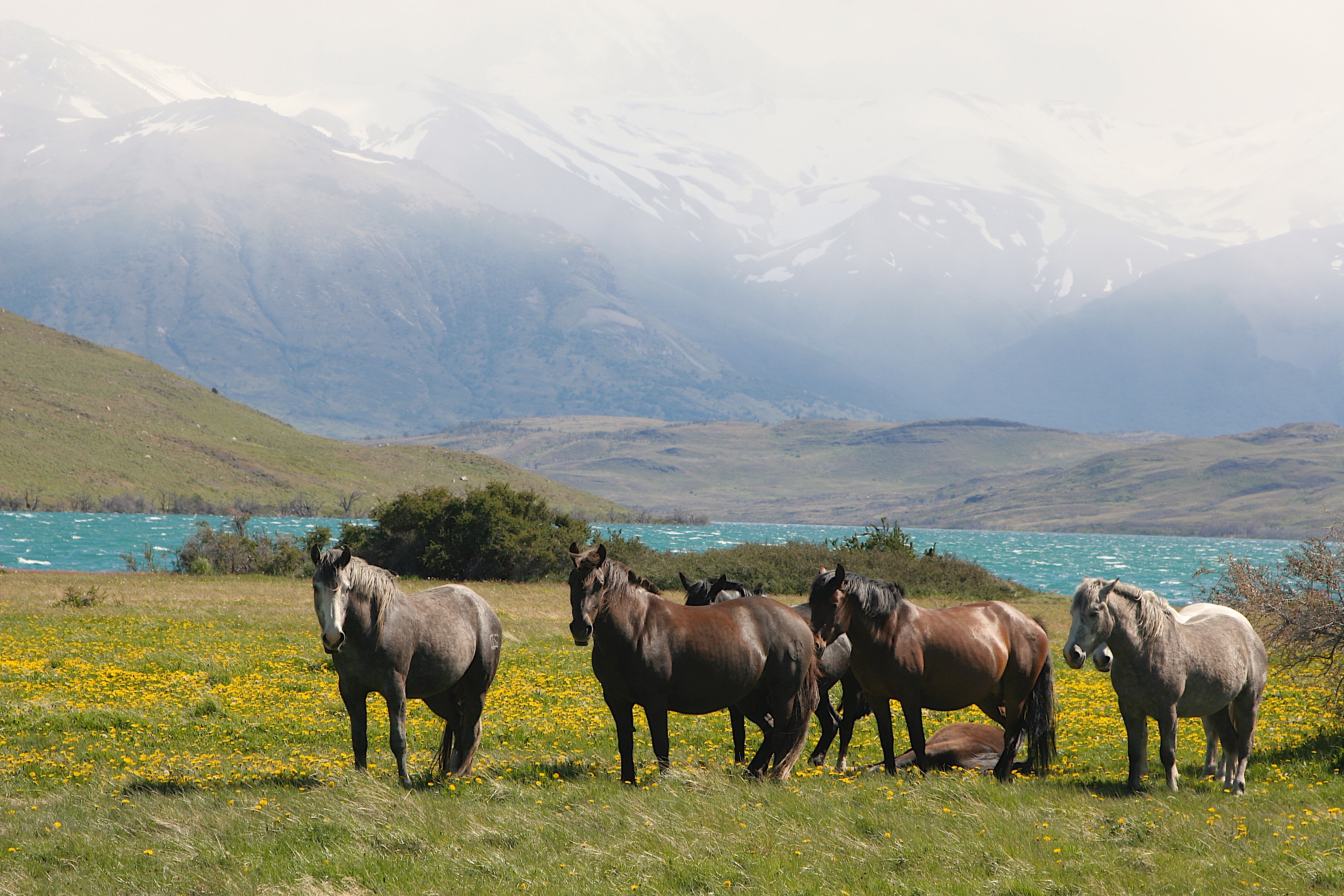
Adventurouspirits
Enlarge
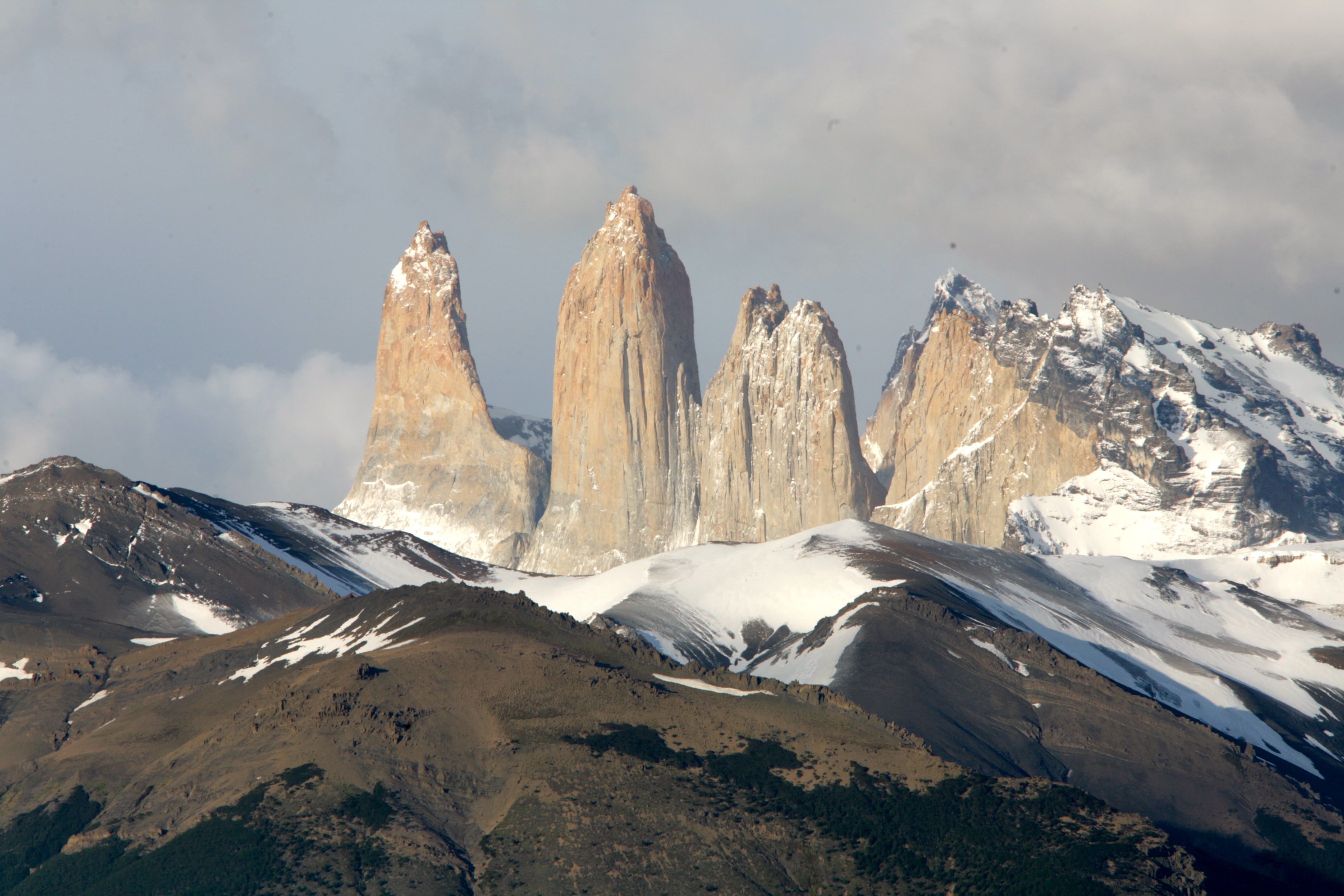
Adventurouspirits
The golden clouds race across the sky, snow whirls above the ice caps treating us to a magnificent sunset.
Enlarge

Adventurouspirits
At dawn, the light strikes the snow high above and the glistening granite towers greet us before disappearing behind the swirling clouds.
Enlarge

Adventurouspirits
The following day we head back into Argentina, meeting fellow travelers Niel and Miin at El Calafate. We spend the evening with these special friends around a fire, drinking wine, eating, sharing philosophies, hopes and experiences. The following day we all head off to see the glacier Perito Moreno.
The Perito Moreno glacier is unlike most glaciers in the world. It is actually advancing rather than receding. The immense, blue, massive ice glacier is slowly smashing its way down the valley pushing mountains aside, and then crashing into the lake below. We stand in awe of the power, the blue colour and the sounds like gunshots as the icebergs groans and cracks. Suddenly ice chucks plunge down into the water, a glacier constantly on the move. Tom is again in geology heaven.
Enlarge
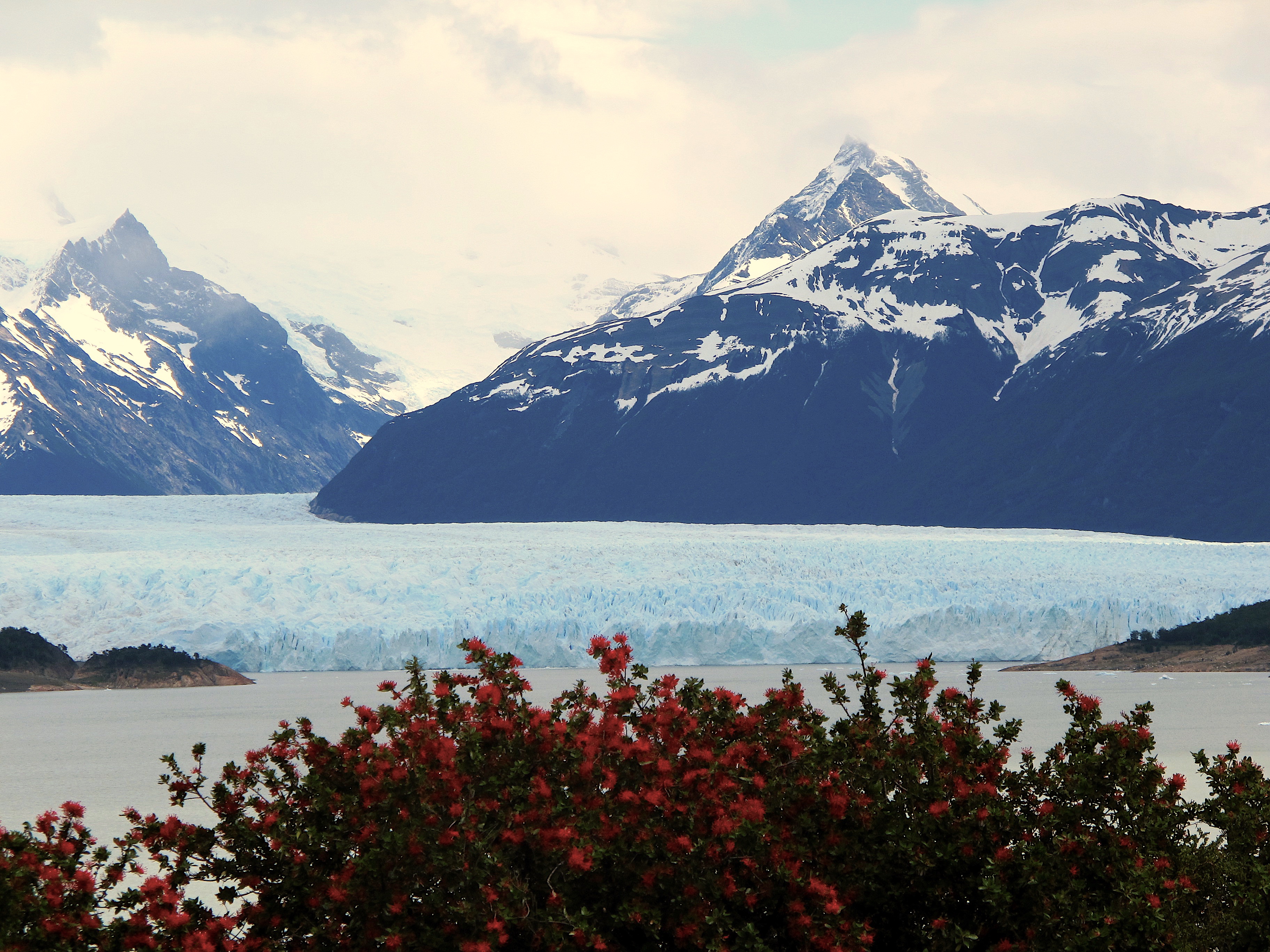
Adventurouspirits
Enlarge

Adventurouspirits
Enlarge

Adventurouspirits
Enlarge

Adventurouspirits
Enlarge
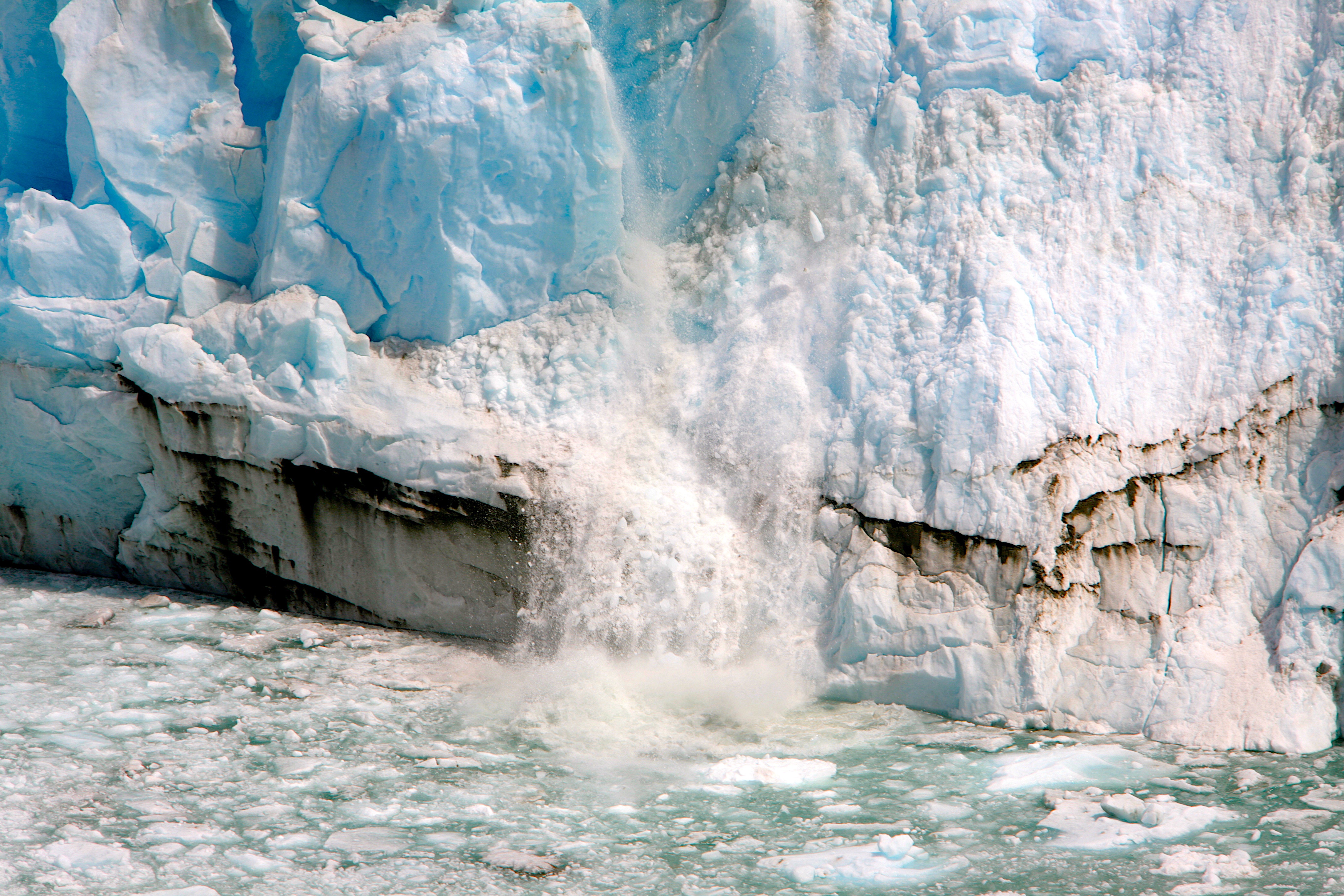
Adventurouspirits
Aeolus the God of Wind followed us to El Chalten, the wind gusting so hard at times that we felt as if we were about to take off in the camper like Mary Poppins with her umbrella. We decided to book into a hostel. Everything is bolted down even the windows. We are however, treated to a view of the peaks of Mount Fitz Roy, a world class mountaineering peak. As I lie in bed and listen to the howling wind, I wonder about the climbers on the peaks and in the mountains and hope, they are safe.
Enlarge
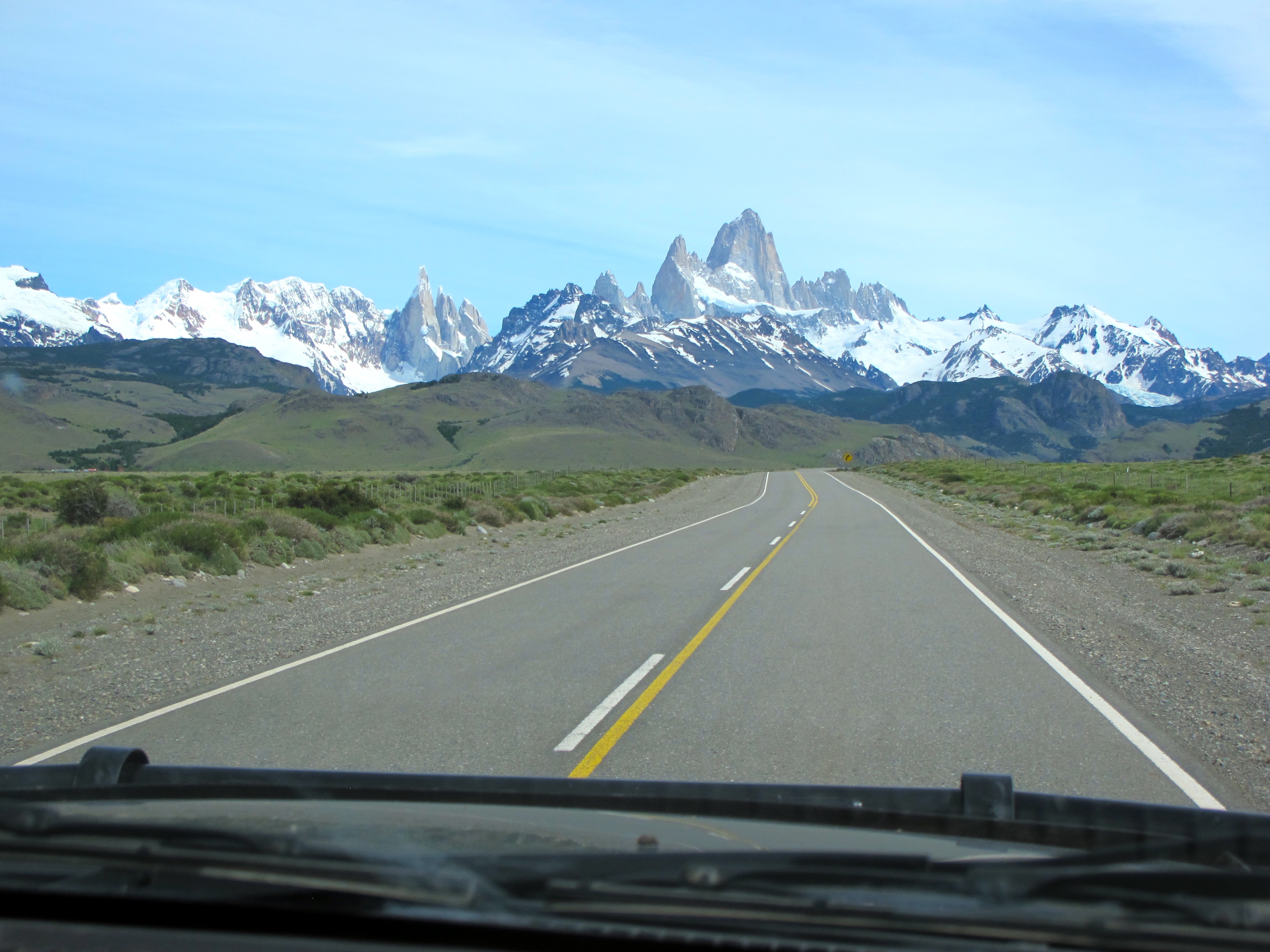
Adventurouspirits
Enlarge

Adventurouspirits
Enlarge

Adventurouspirits
Heading east from El Chalten we have the wind to our back and the Nissan happily gobbles up the miles. We then turn north along the legendary Argentina North South Route 40, across the arid Patagonian plains. Aeolus accompanies us blasting us with the billowing dust generated by the passing trucks, the landscape mostly barren except for fat woolly sheep and little lambs struggling to stay standing in the wind. Guanacos bounce off into the distance as we approach, a little armadillo waddles slowly across the road, freezing as we walk towards it. We stop to camp. I stand in the hot shower feeling the dust roll off me, the warm water feels so good and I do not want to get out. I know my cold damp dusty towel is waiting and as I rub my hair dry, I can smell the dust from the towel. Nothing is safe from Aeolus.
Enlarge
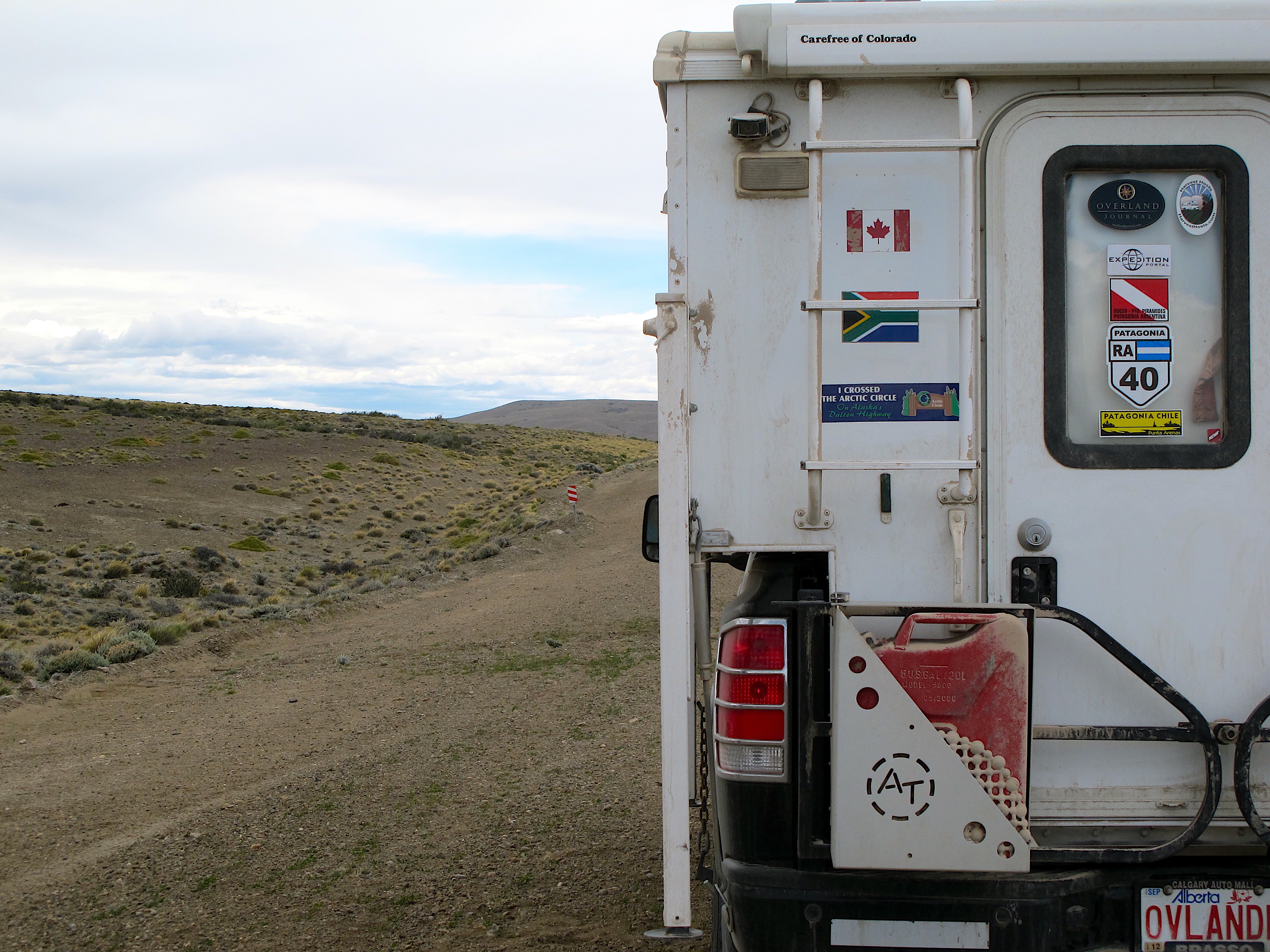
Adventurouspirits
Enlarge
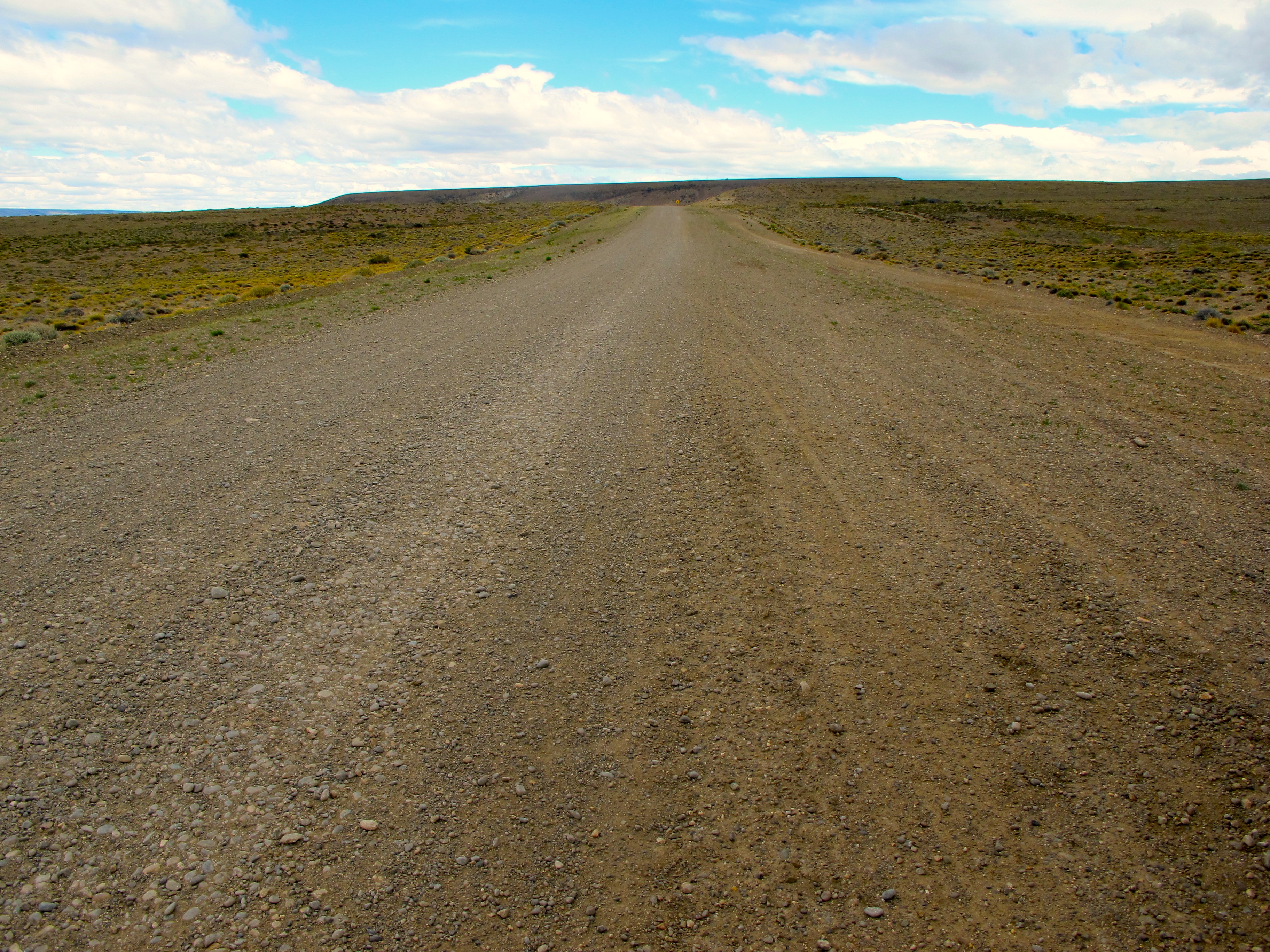
Adventurouspirits
Enlarge
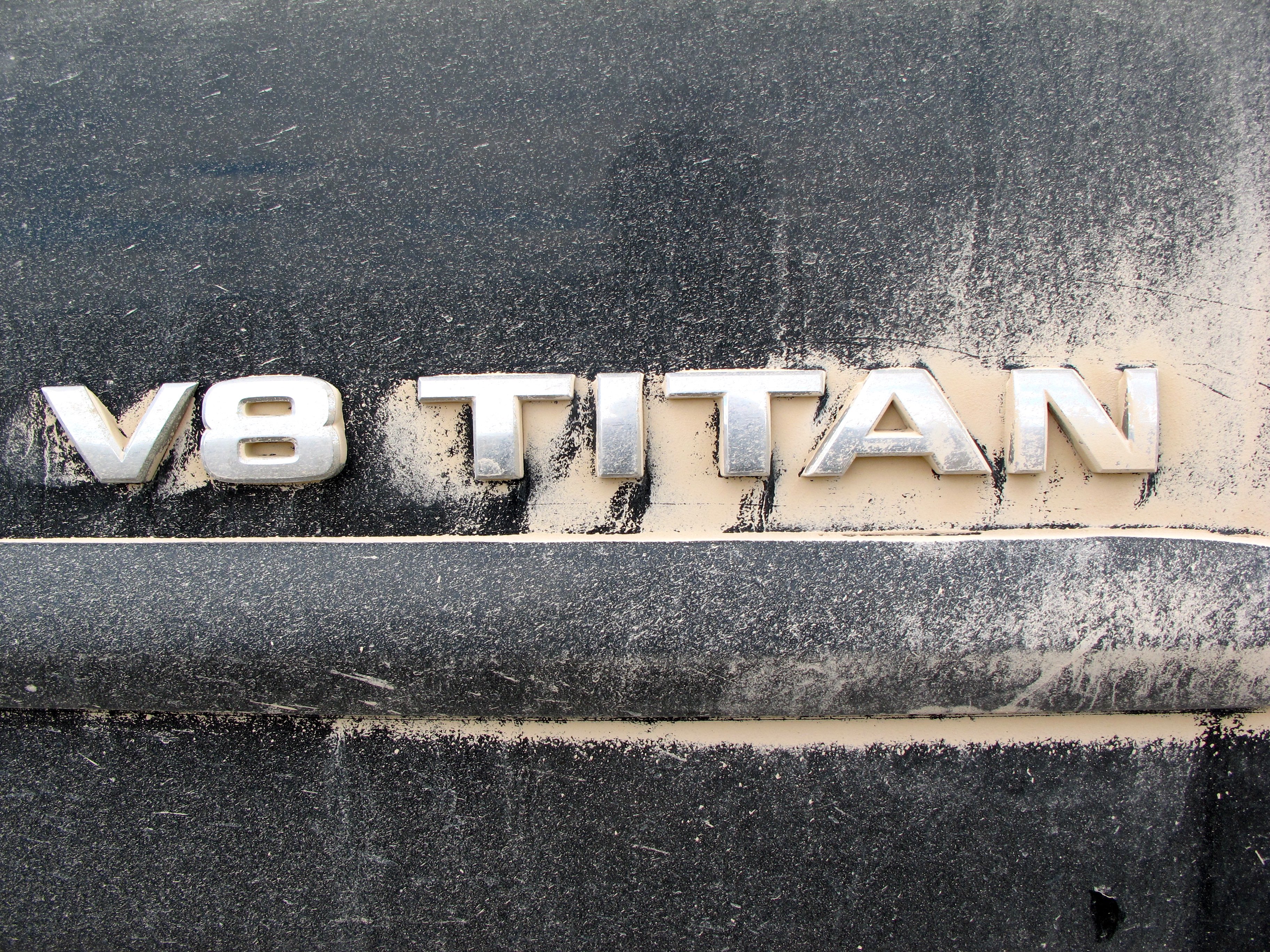
Adventurouspirits
Enlarge
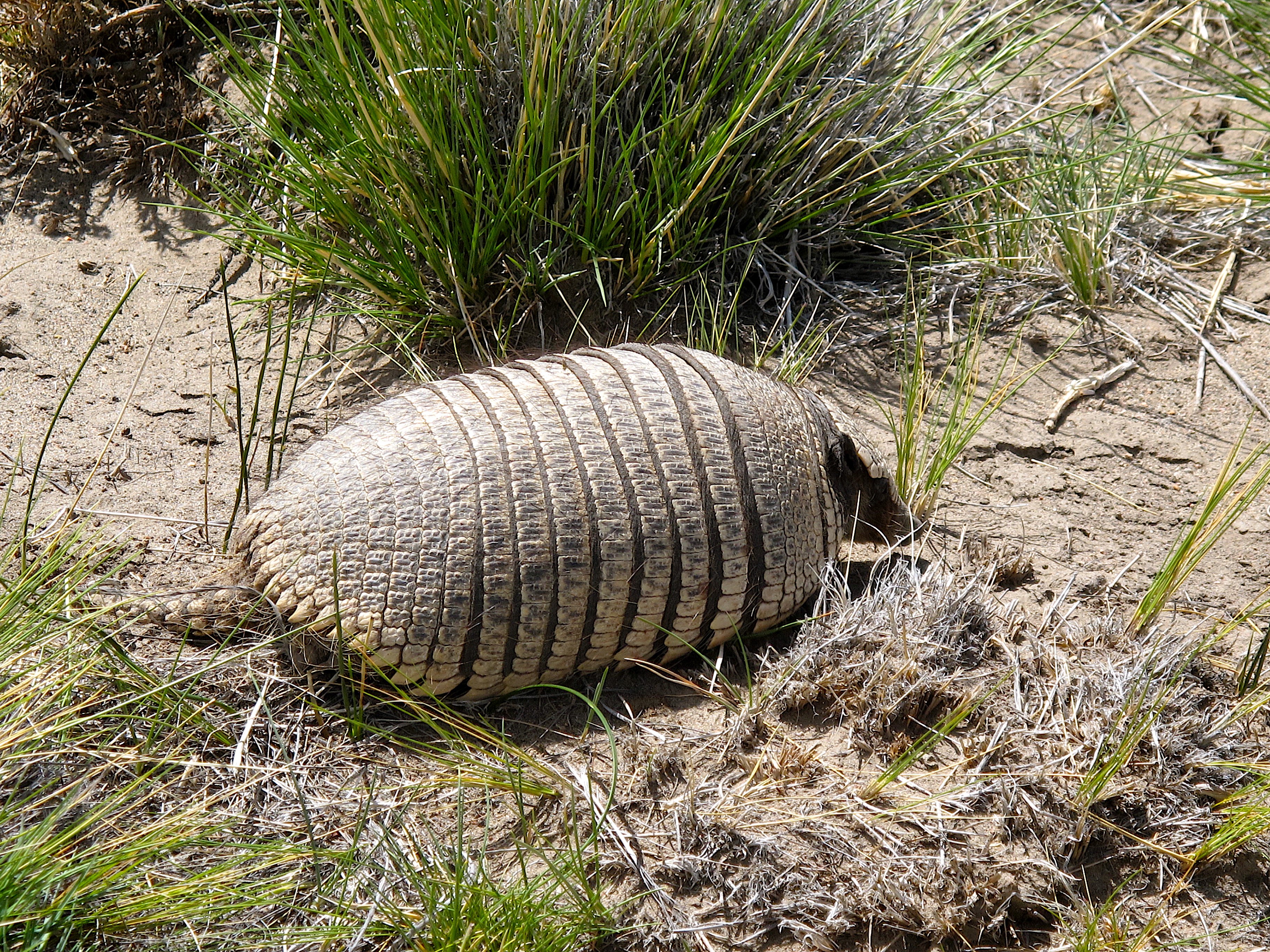
Adventurouspirits
We stop to camp at the Cuevas de las Manos or the Caves of the Hands.
Enlarge
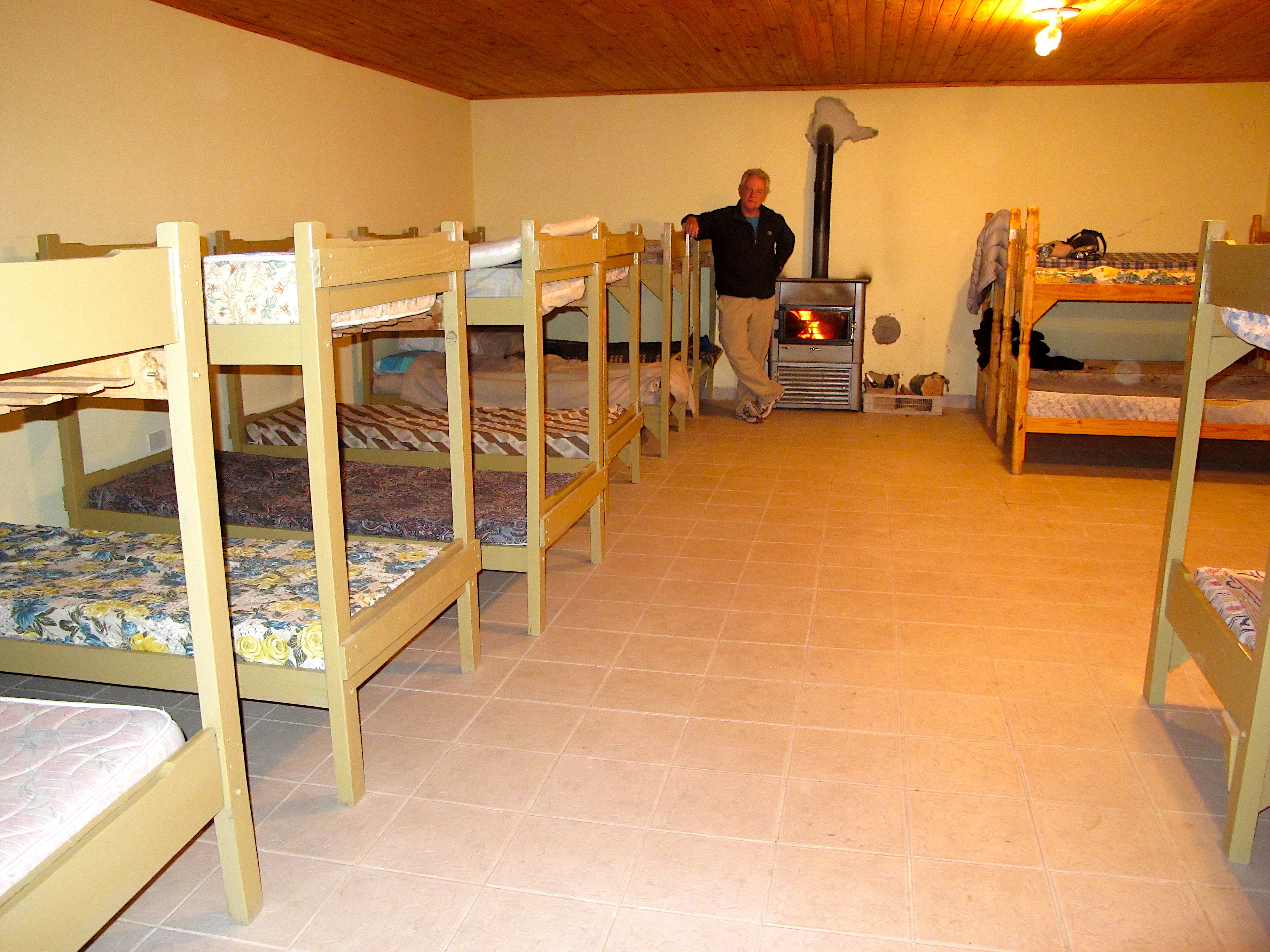
Adventurouspirits
We hike down the canyon, across the river and up the other side. We are breathing hard, as we are hurrying to catch the 11am tour to see the hands painted on the rocks over 9000 years ago.
Enlarge
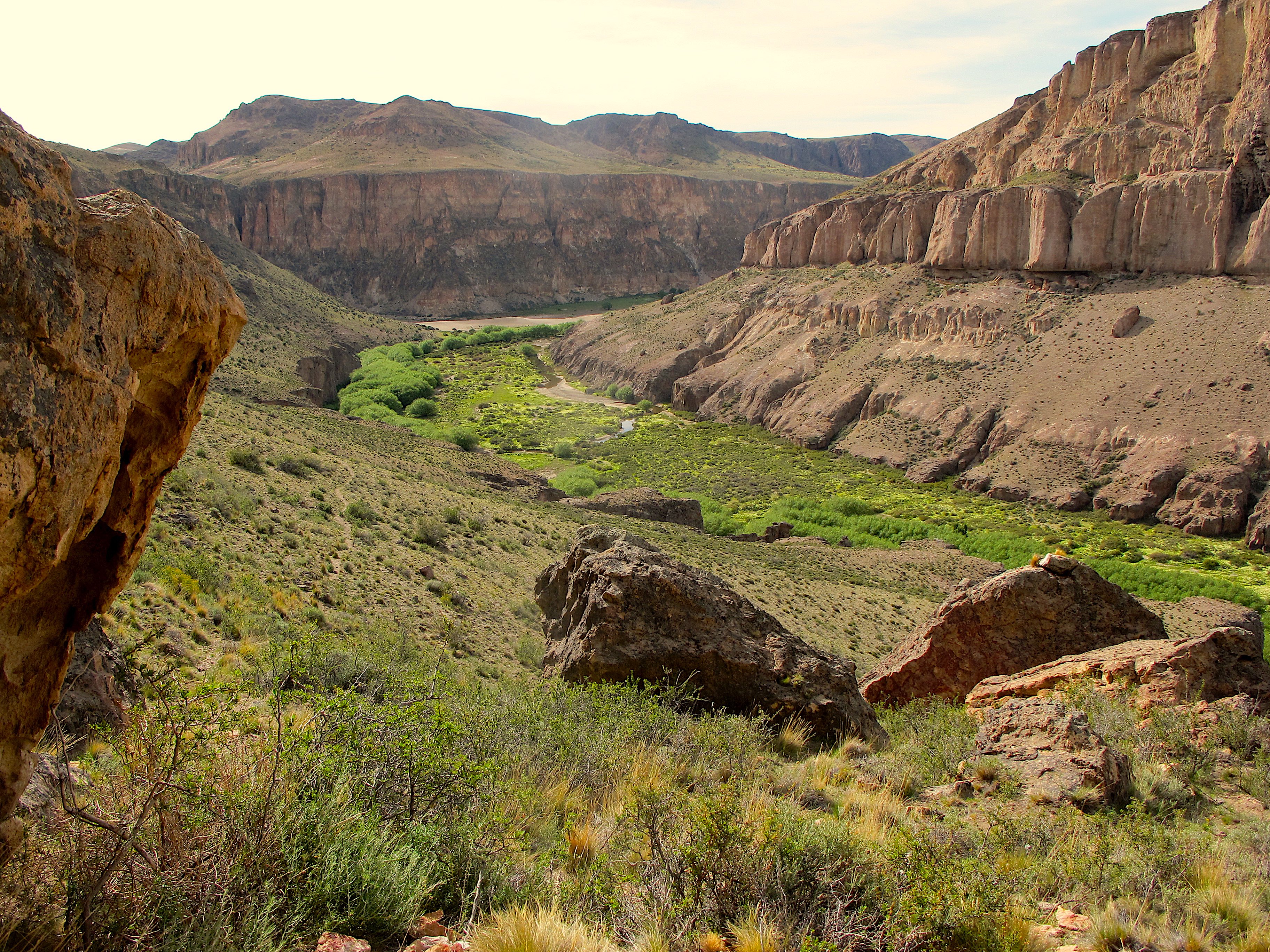
Adventurouspirits
Enlarge
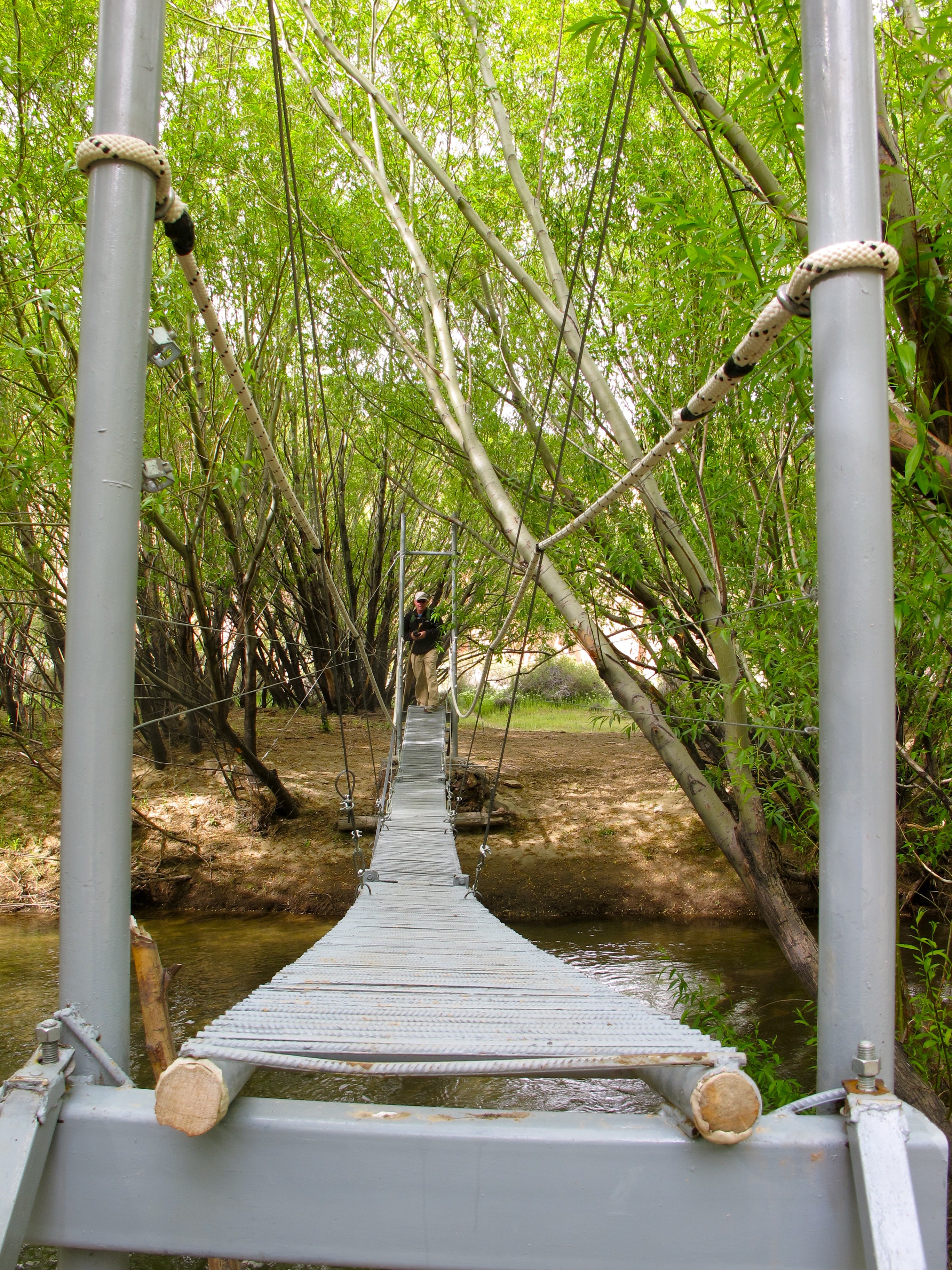
Adventurouspirits
Enlarge
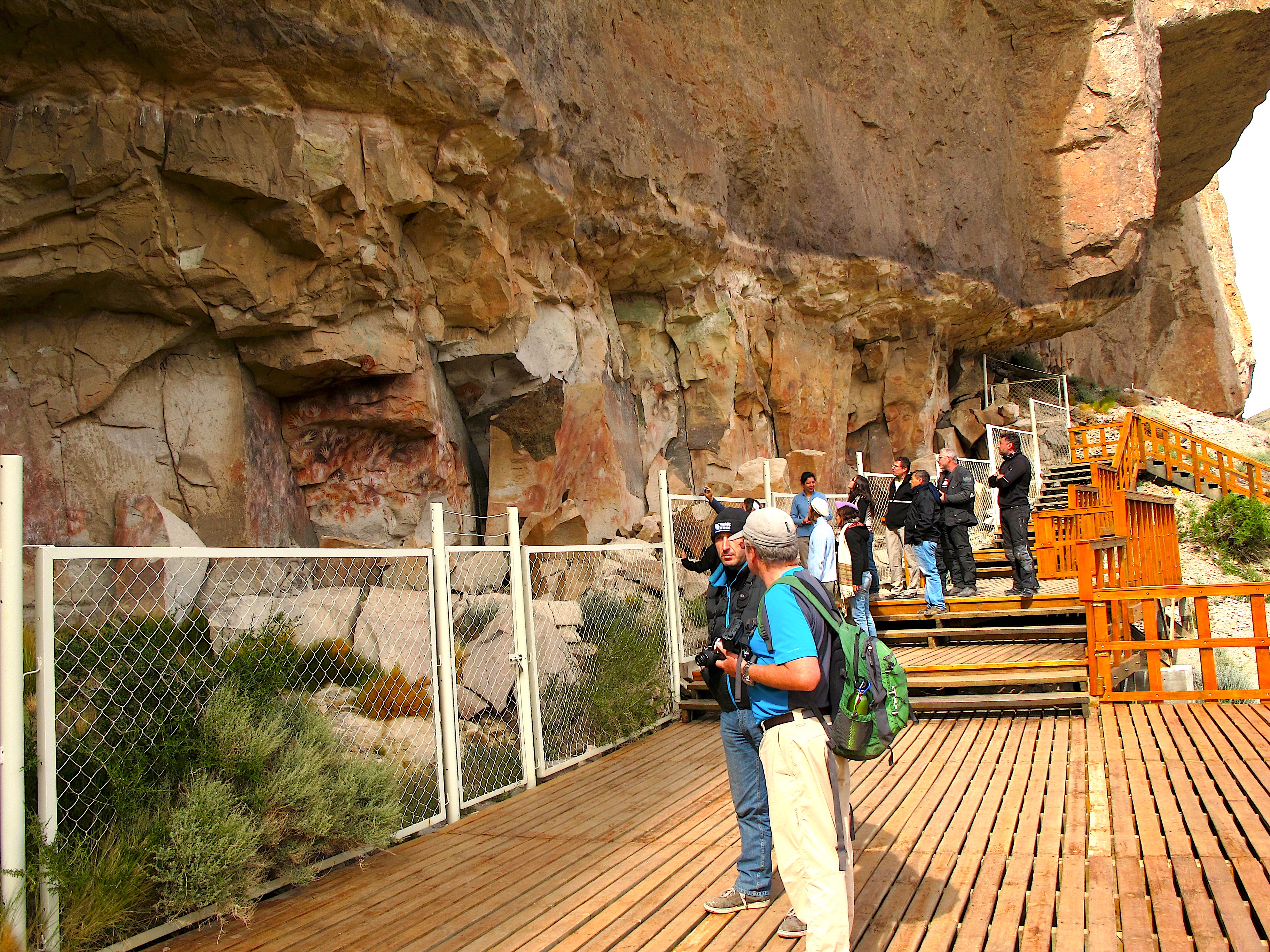
Adventurouspirits
The hands are so perfect that I wonder is this another tourist trap, beautifully preserved and hidden from the sun and wind they tell an ancient story of people living in the valley 7000 years BC.
Enlarge
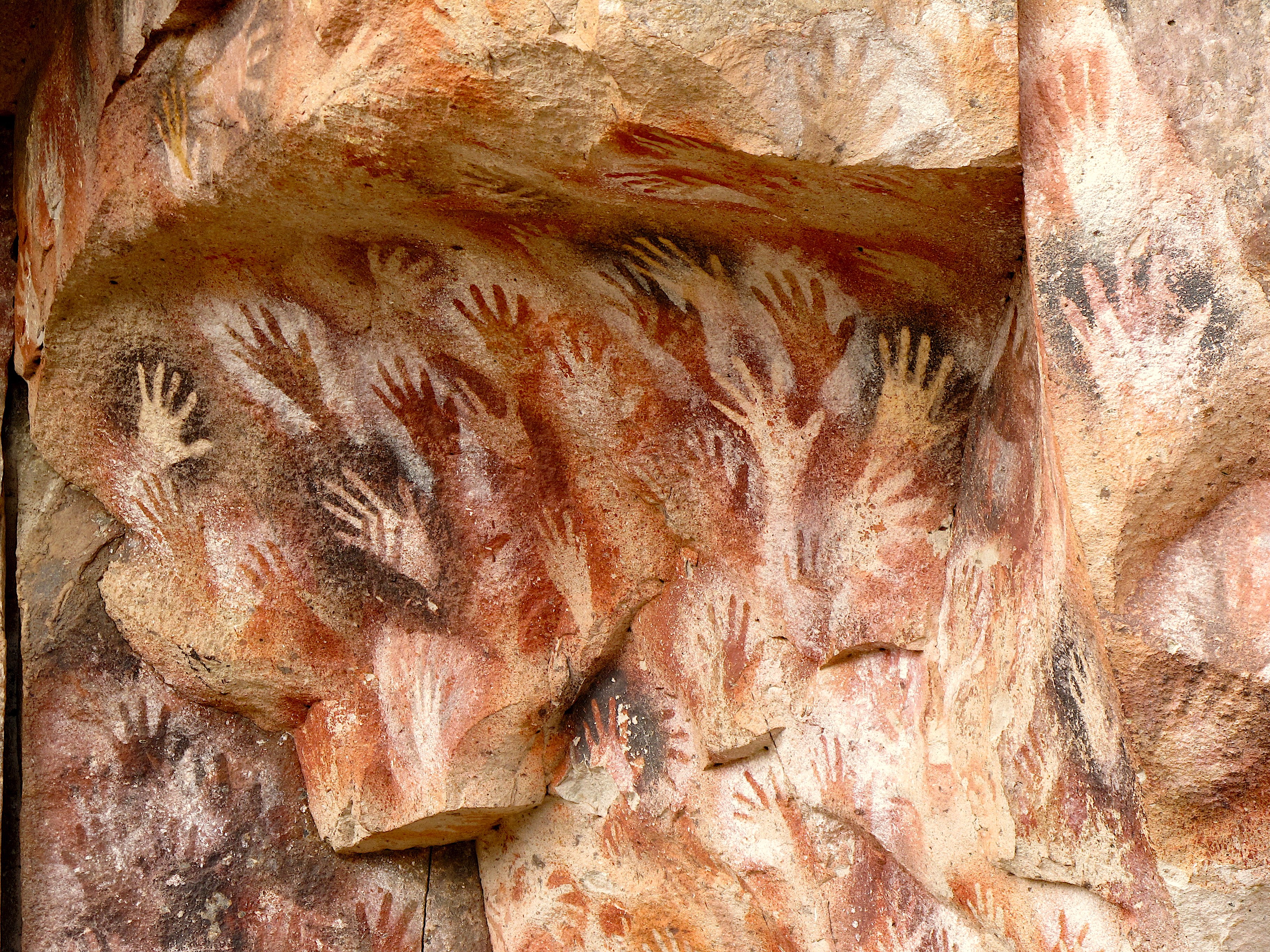
Adventurouspirits
Enlarge
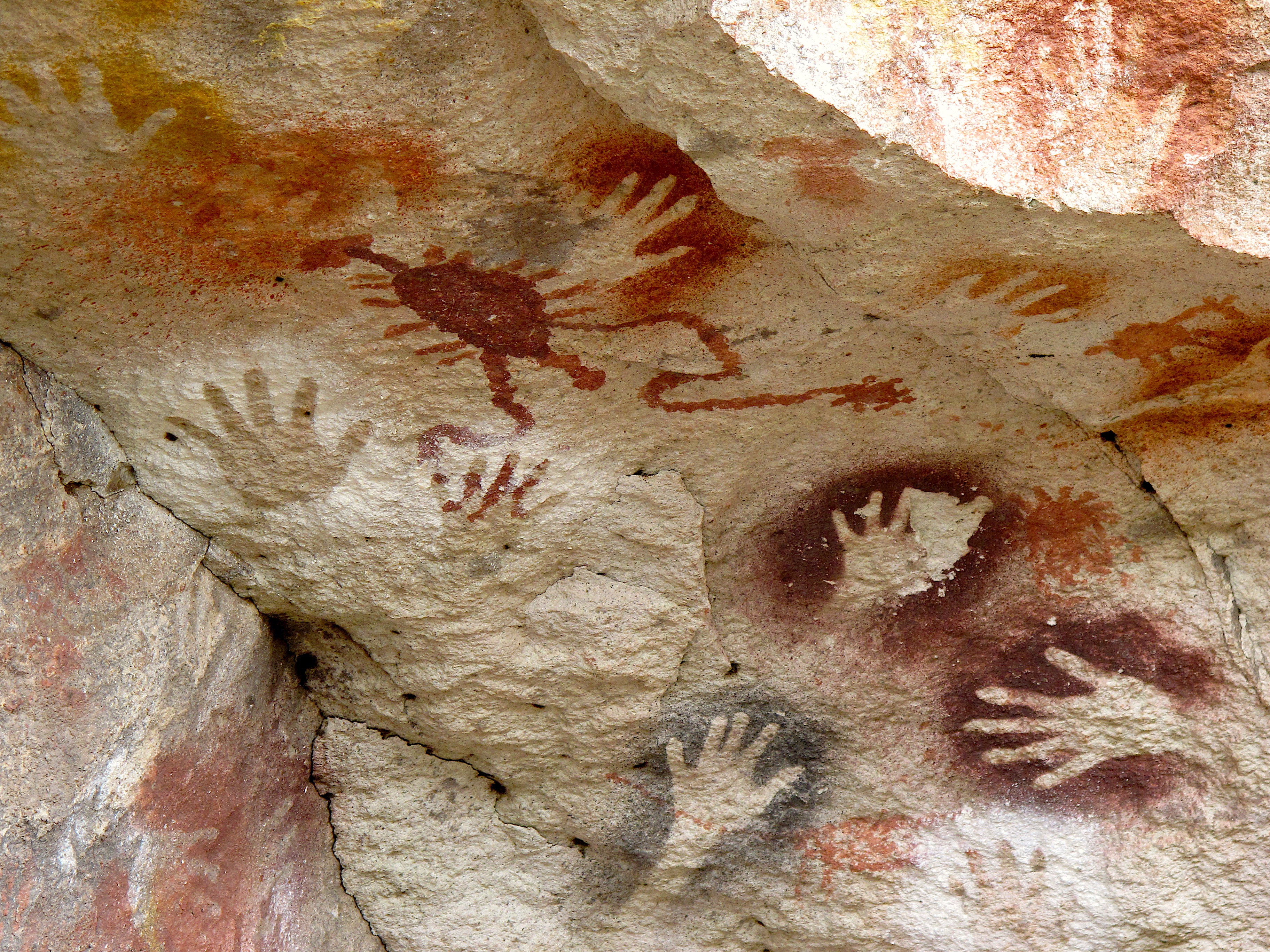
Adventurouspirits
Enlarge

Adventurouspirits
Hiking back to our truck parked across the canyon we stopped for lunch at the stream running through the forest. We reflect back to the oasis of the Sahara, finding a little piece of heaven in barren dusty landscape. Life is full of wonderful surprises and the rock hand paintings are one of them.
Enlarge
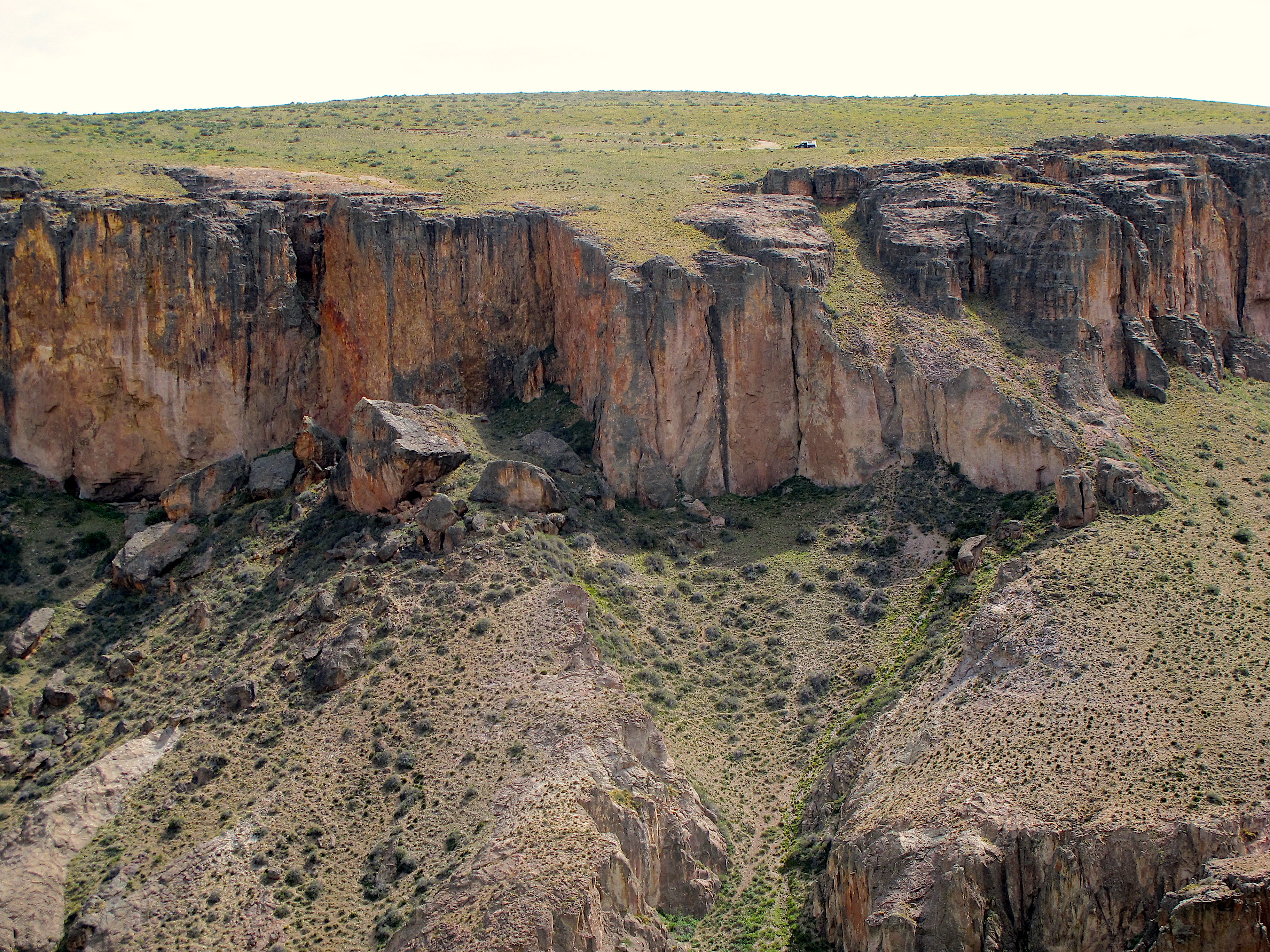
Adventurouspirits
We bid Argentina farewell and crossed over the Andes into Chile. The stern fruit and vegetable border control personal were soon scrambling around our camper and truck, digging into our possessions, looking for the illegally smuggled-in substances. I am talking honey, fruit and vegetables. They cheer when they find our illegal substance, a tiny little nearly finished pot of honey. Oh, Winnie the Poo do be careful when you cross the border into Chile. The fruit and veggie doggie will not smell out your drugs but it will find your honey. We are marched back to the office and they have to manually go through piles of “I have Nothing to Declare forms,” ah the disappointment when they discover we had declared we had honey. No jail time for us at this border crossing.
Enlarge
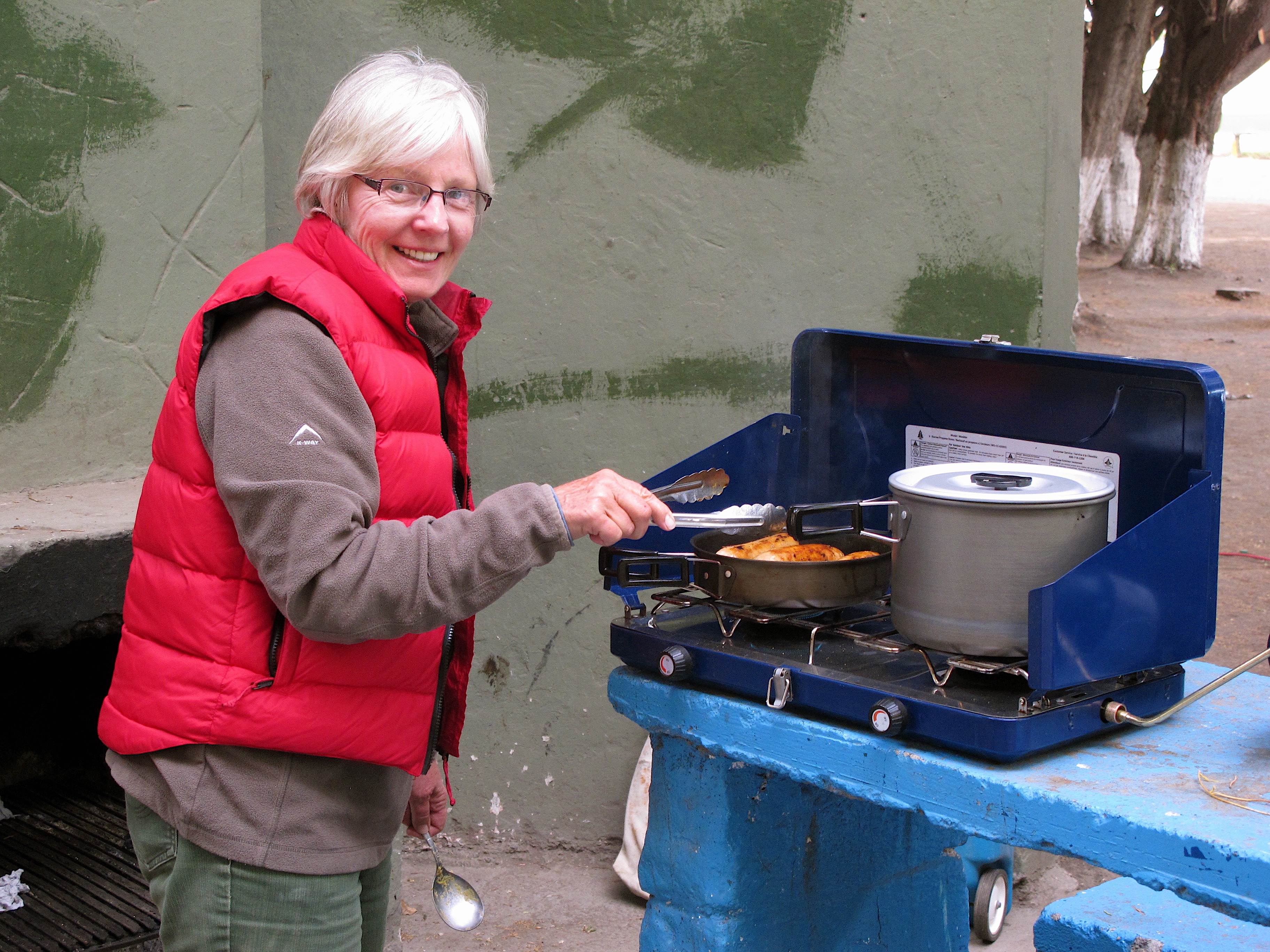
Adventurouspirits
The road from Chile Chico is worth the detour. Climbing steeply over the mountains, the narrow road winds up and then down along the steep cliff edge and around blind corners but offers us one of the most spectacular drives we have done. The going is slow not only because of the road but also because we ooh and ahh all the way to the bottom, until it joins up with the famous Carretera Austral or Route 5 road.
Enlarge
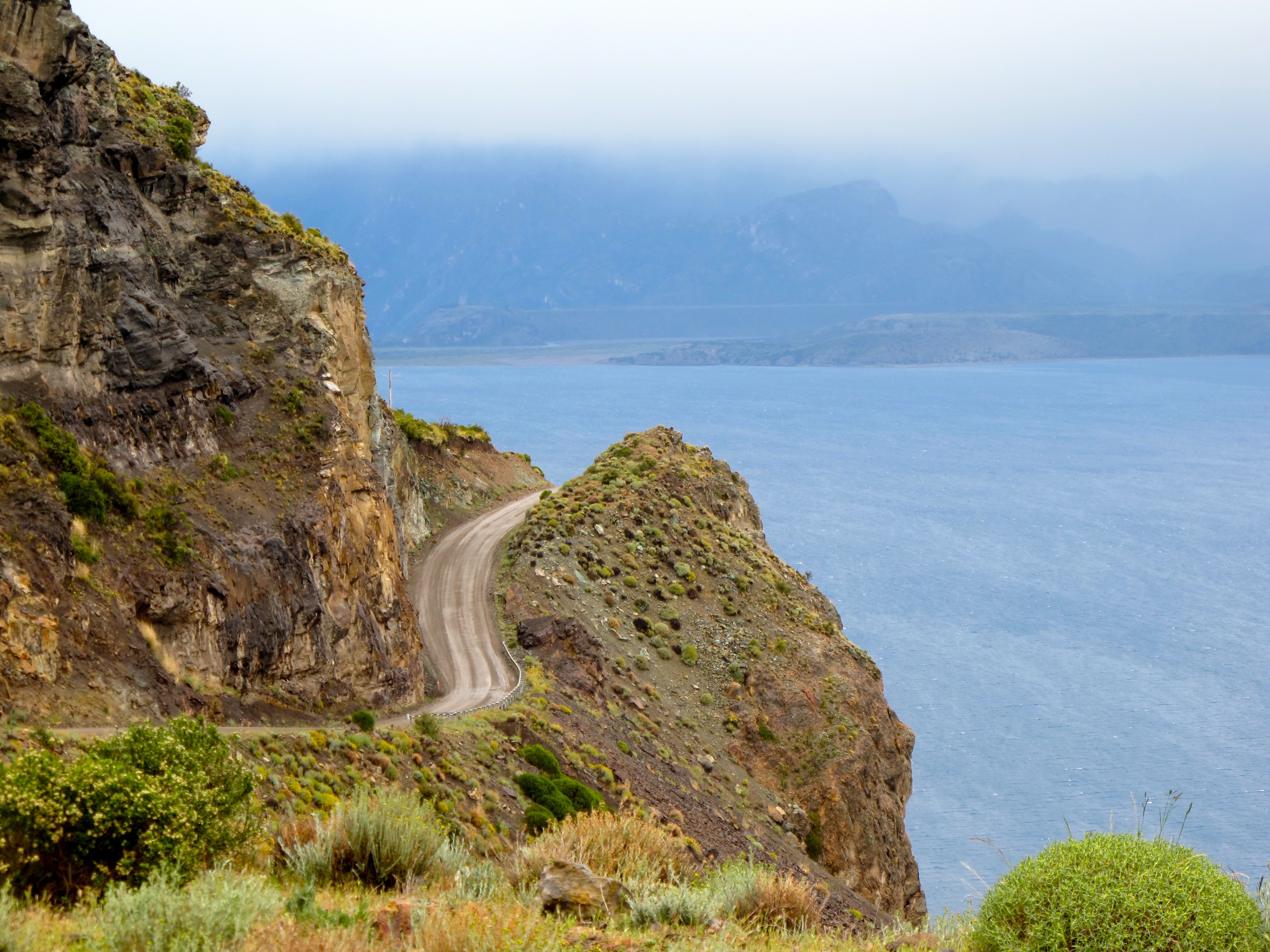
Adventurouspirits
Enlarge

Adventurouspirits
Enlarge

Adventurouspirits
Southern Chile is a wonderland of mountains, forests, wild flowers, glaciers, lakes, fjords. It is a wild and battered coastline. It is remote, the weather is challenging with cold rains most of the year, its tiny hamlets and the friendly of people provide a warm welcome.
Enlarge

Adventurouspirits
We find a sheltered campsite on the lakeshore and make ourselves hot wine and a hot water bottle and sit huddled in the camper keeping warm and dry. The ducks on the lake quack to each other as they enjoy the calm waters of Rio Tranquillo. This is heaven.
Enlarge

Adventurouspirits
Enlarge

Adventurouspirits
We arrive at the biggest town in this area, Coyhaique and park the camper while we go to book tickets on the ferry. It is impossible to drive the full length of Carretera Austral without having to take at least one ferry. And then the impossible happens we both forgot where we parked the truck. We have lost the truck. We purchase some hot peanuts from the street vendor to keep us warm and give us energy while we search the streets looking for our truck. After we locate it, we head off to a cabana for the night and meet Mr Happy.
Tall, skinny, and wearing several layers of clothing Mr Happy greeted us as if we were the most important guests he had ever had. He was soooo happy to have us stay with him. He fussed around and when I asked where the nearest laundry was he immediately took me to his own private washing machine. I yelled at Tom to bring the laundry as Mr Happy already had the washing machine filling with water and was adding detergent.
“Also your shirt, take off the shirt you are wearing,” I yelled to Tom. Tom came running in his underwear across the parking lot with a bulging bag of laundry. Mr Happy explaining everything to me in rapid Spanish and the more I repeated that I do not understand Spanish the faster and louder he spoke and he then decided I needed more Spanish lessons. So one by one as each article of clothing was put into the washing machine he would grab it hold it up high tell me what it is in Spanish, I had to repeat and then he put it into the machine. Bra, panties, t-shirt, jeans, towels, I had a hard time not bursting out laughing. I loved this Mr Happy; he was so in love with life and his guests.
We continued north and soon the road was rocky and muddy. Wild flowers filled the valley, trees reached for the sky, and waterfalls tumbled down the mountains. We stopped for lunch and the roar of all the waterfalls filled our world. “Listen,” I said to Tom, “We are so alone here but the noise and roar from all the waterfalls makes it hard to even hear each other.” We were driving through Parque National Queulát and were later to learn that the word Queulát actually means the Sounds of the Waterfalls.
Enlarge

Adventurouspirits
In a tiny hamlet we stopped for gas and asked if there was anywhere we could get coffee. The aging attendant waved his hand and pointed to a little house across the road. Tom walked up the pathway it looked all closed up and the sign on the door read “Cerrado.” But as he was returning to the car and young girl came running out and said we could come in. Sitting around a wood burning stove, we enjoyed a hot bowl of homemade soup and a cup of coffee.
Enlarge

Adventurouspirits
That evening we enjoyed the company of Juan and Edriana in La Junta at their Hosteria Rayen. What a delightful little oasis in the cold wet weather. Sitting around the blazing fire, we chatted in our broken Spanish and their broken English. A good sleep in comfortable beds and we were ready for more tough driving. We bid them farewell and they told us to come back when the weather is better.
Enlarge

Adventurouspirits
The further north we drove the narrower, muddier and more difficult the road became. We had to drive 4X4 and the truck power helped us cross over little streams, across crumbling edges until we were stopped dead by a road crew who were trying to fix the road that by now had been completely washed away. Donning our bright yellow raincoats we joined the crew and watched the bobcat driver work the earth, diverting raging streams, moving boulders and lifting giant tree trunks, “Its like an elephant trunk” I whispered to Tom. Several hours later, they had built a narrow bridge over the stream and we were allowed to proceed.
Enlarge

Adventurouspirits
We arrived at Chaitén a little town buried in ash by the Chaitén volcano and then flooded by raging rivers and mud on the 3rd May 2008. It still stands battered by time, waiting for decisions to be made as to what will become of the town. A few residents have returned but it is like living in a disaster area and a constant reminder of what once was. We chatted to Nicholas who lived through the eruption and has returned to try to reclaim a life shattered by the volcano. He spoke of the difficulties, the decisions of whether to rebuild or relocate the town, how so many lost not only their homes, but their businesses, jobs and community. It reminds us of the power of nature and how vulnerable we are when the earth becomes restless.
Enlarge

Adventurouspirits
Enlarge

Adventurouspirits
Enlarge

Adventurouspirits
Enlarge

Adventurouspirits
The following morning we boarded the Naviera Austral ferry along with fellow overlanders Clements and Kristina. We are all traveling to Puerto Montt. After 8 hours we arrive and bid them farewell as they are heading west and we north.
Enlarge
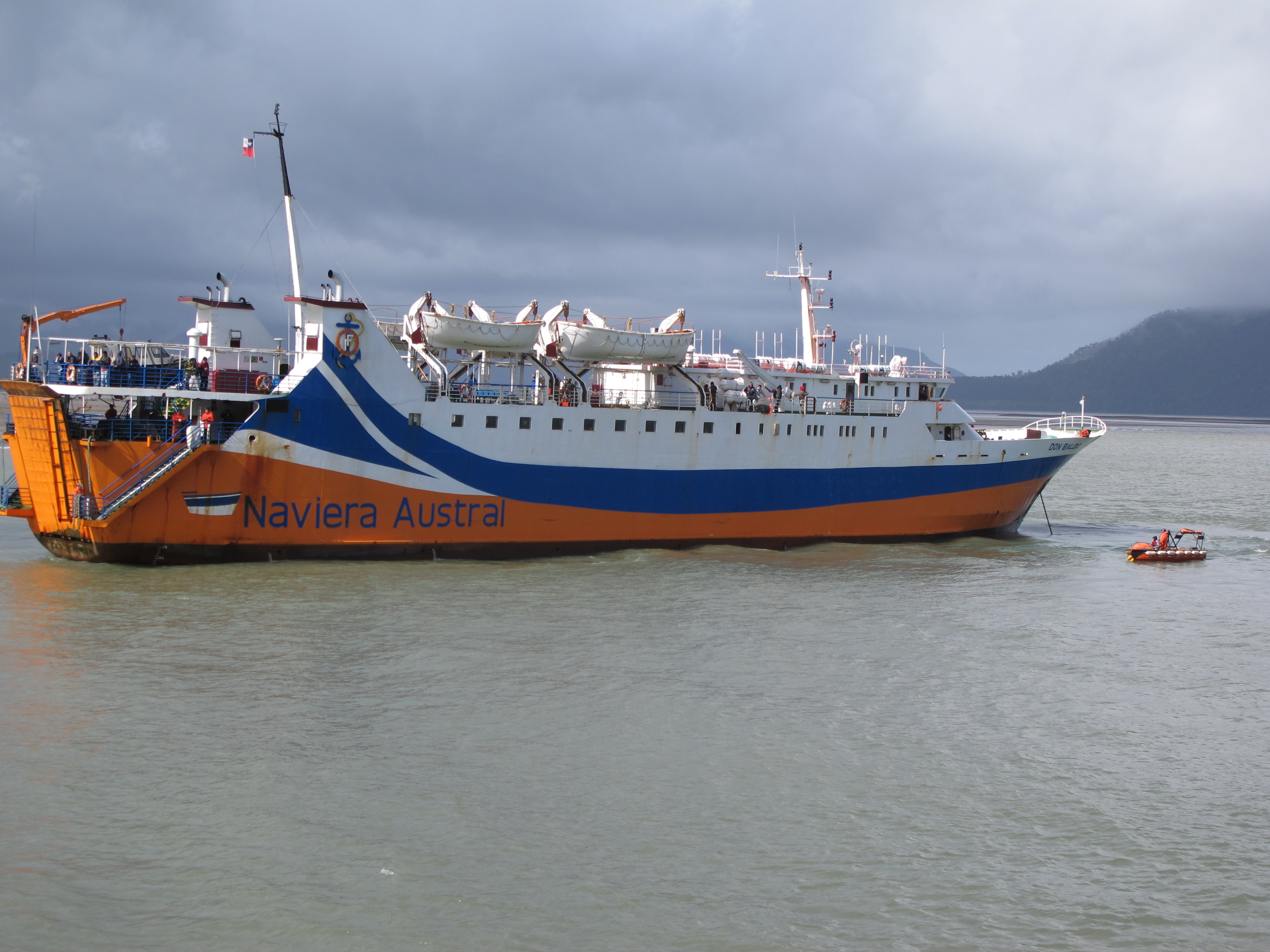
Adventurouspirits
We arrive at a campsite to be greeted by Mr Happy Dog alias (Bobbie) a big friendly yellow lab with a bad cough. Juan the owner was also happy to have us and as it was late and we were heading for bed, chatting will have to wait until morning.
Enlarge

Adventurouspirits
The campsite in Frutillar had us believing we had arrived in a little Bavarian town. As we strolled along the lakeshore in the morning volcanoes around the lake glistened in the sun. We had excellent apple strudel and strong coffee before heading off to explore the lake district of Chile and perhaps head over to Argentina’s Lake District around Bariloche.
Enlarge
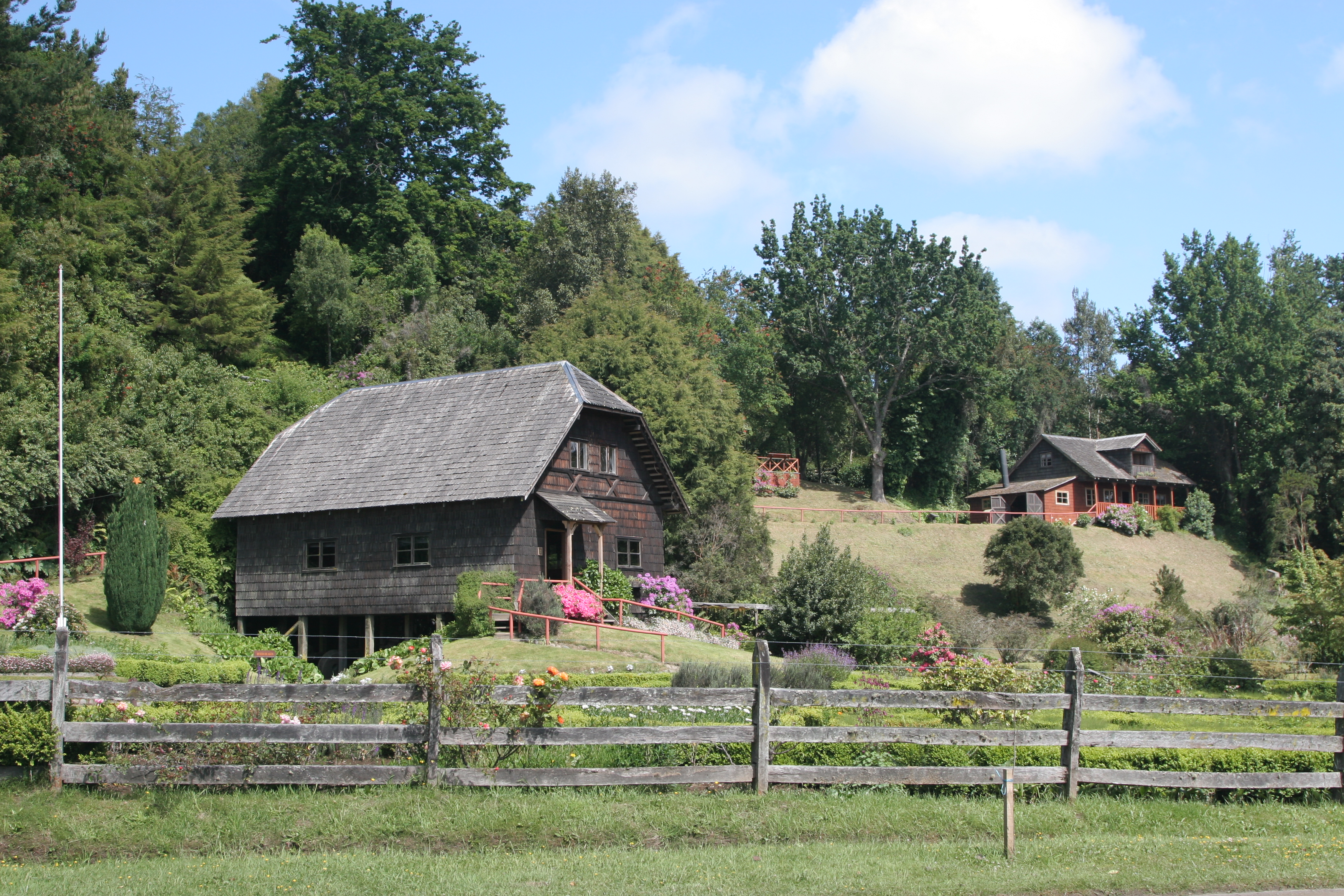
Adventurouspirits
Enlarge

Adventurouspirits
It was a clear day, not a cloud in the sky we had not had such a perfect day for weeks. We drove towards the Puyehue Volcano. I glanced up and excitingly said, “Its spewing, it’s spewing.” What is spewing said Tom glancing around the truck and wondering now what.
Enlarge

Adventurouspirits
Enlarge
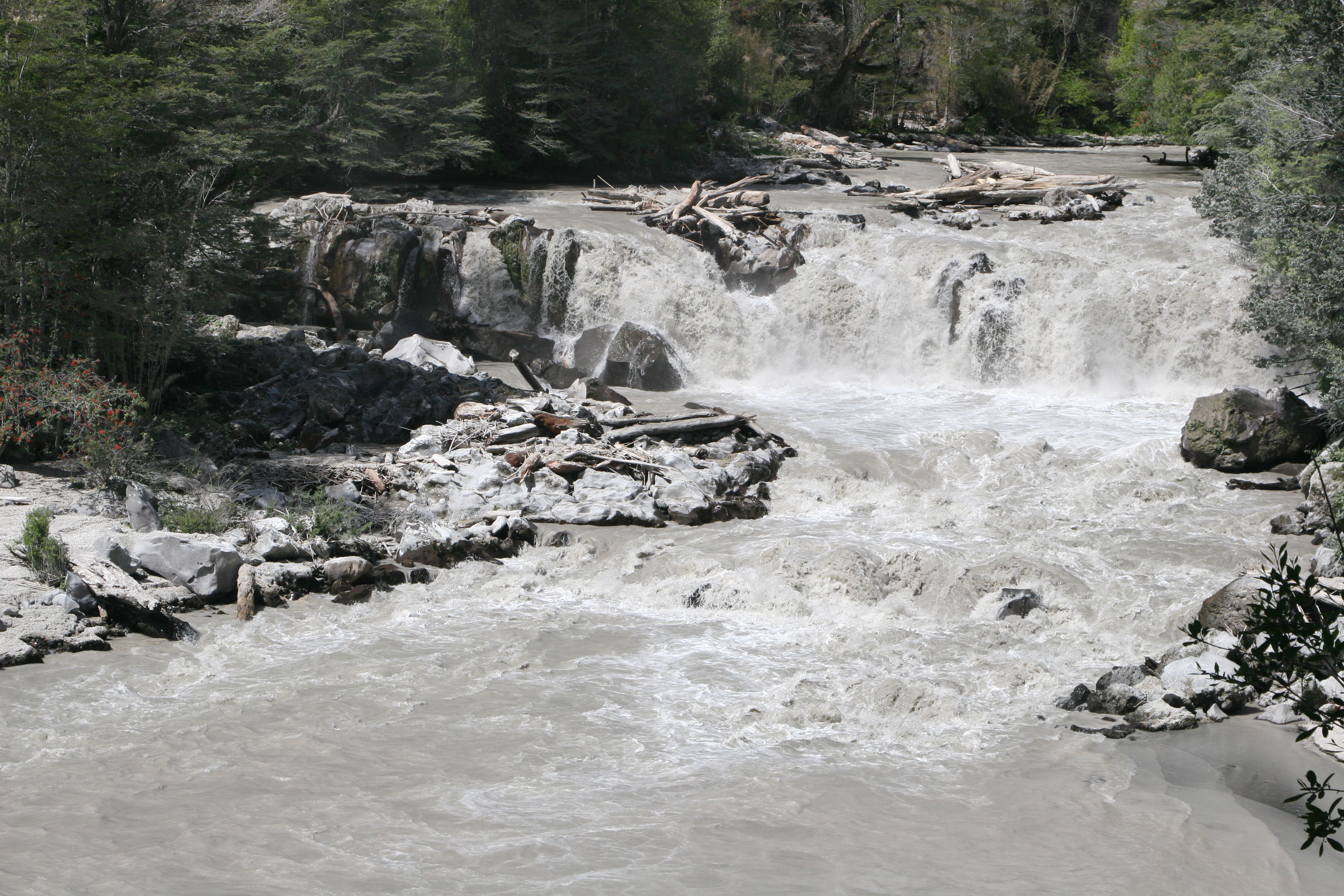
Adventurouspirits
“The Puyehue Volcano is blasting away” We pulled over and yes indeed we had a spectacular view of the volcano belching ash high into the atmosphere. A massive cloud of ash was drifting towards Argentina. We arrived at the border it was closed so headed for a little campsite/hostel beneath the volcano. Christian the young muscular mountain climber/owner urged us to hike up the opposite mountain for a view over the volcano. “it’s a clear day we don’t often see it like this”.We scrambled and huffed and puffed the hour up watching the volcano across the valley blasting, listening to it roar like thunder, groaning under the strain of pent up energy. Tom wanted to stay forever. But we had to hike back down to the campsite in the valley before dark.
Enlarge

Adventurouspirits
Enlarge

Adventurouspirits
Enlarge

Adventurouspirits
We arrived back at the campsite to general chaos. The border to Argentina was closed because of the volcano activity and ash fall out. Motorists were stranded. A wild boar was roasting on a spit to feed the crowds, everyone pitched in. Soon the kitchen was taken over by the guests, Christian happily trying to arrange food and bedding for all. Wine and beer appeared, tables were hastily set by guests, food was being served by guests and glasses were raised in toasts to the volcano and hopefully a safe night of sleep.
Enlarge
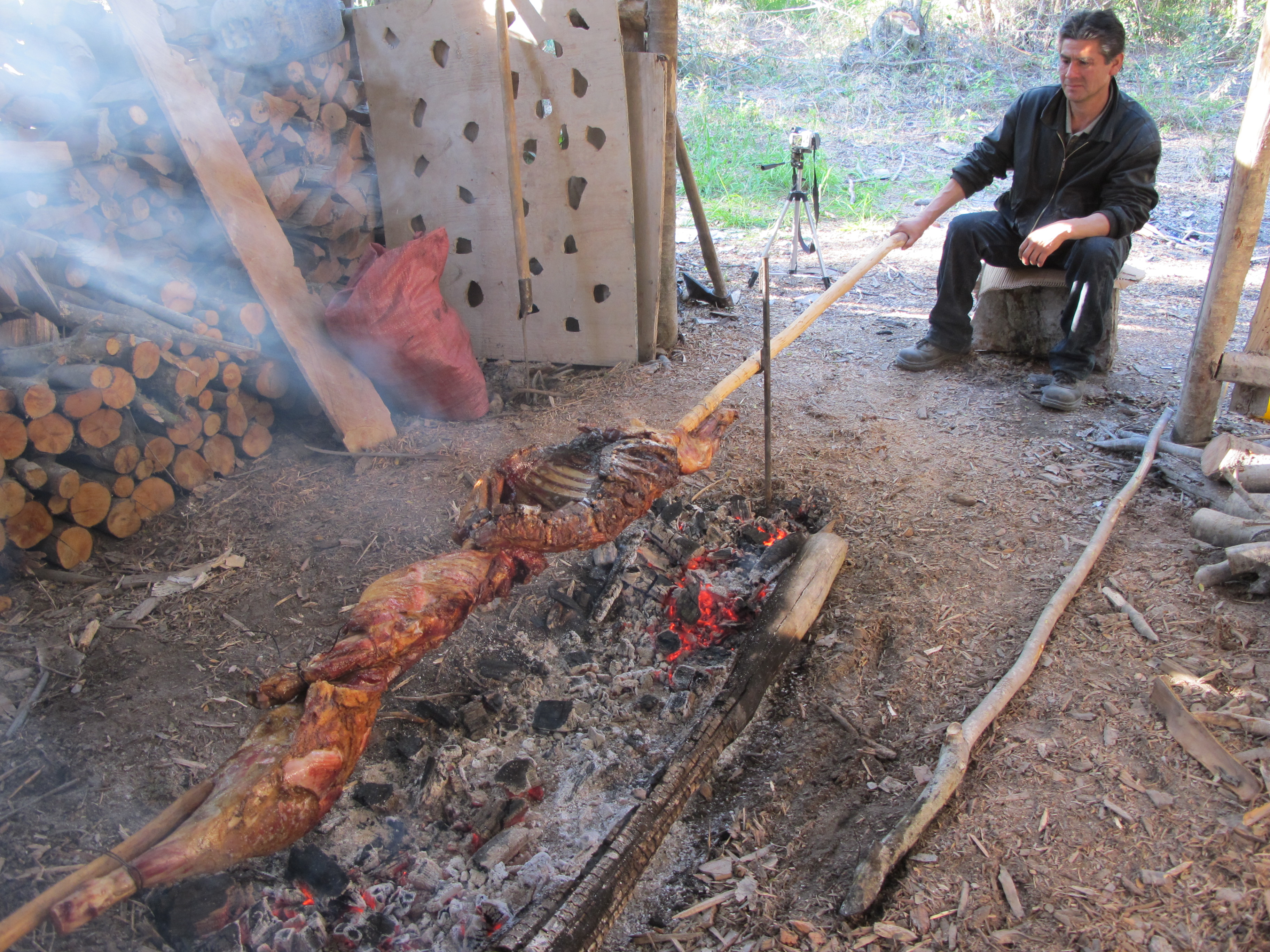
Adventurouspirits
It grew eerily dark as the ash cloud covered the sky hiding all the stars, only the rumbling of the volcano could now be heard. I lay in my little camper in awe listening to the volcano and thinking what a privilege to be so close to the might of nature.
Enlarge

Adventurouspirits
It was time to start heading for our final destination, Santiago, the capital of Chile. It was from here that we planned to ship our truck and camper back to Canada and catch our return flight back to Calgary. It is hard to believe after 17 months on the road driving over 63,000km and millions of memories our Alaska to Argentina journey has come to an end. There always has to be an endpoint of any journey it is never possible to see everything, do everything and meet everyone on a journey. The time comes when we have to say, “That’s it. It is time to go home.” No matter where one goes, the final destination is always, home. Therefore, we are flying back to Canada where this incredible journey began and will be meeting our Nissan in Vancouver and our final miles of this journey will be crossing the Rockies back to Calgary.
We arrived in Santiago to meet with our shipping agent Maria. After our last shipping escapade in Panama, we were apprehensive about shipping back to Canada. Maria was wonderful and after organizing for loading, we headed to the Pacific coast for some relaxation and preparing the truck for shipping.
Enlarge

Adventurouspirits
Enlarge

Adventurouspirits
Enlarge

Adventurouspirits
We walked along the beach reflecting on the highs and lows of this journey. The best and the worst. The funniest and the saddest. What we would do again and what we would do differently. We thought about all the wonderful people we met along the way, both locals and fellow travellers. We thought about the people who supported and encouraged us along the way; special thanks go to our children, Larry and other fellow overlanders.
Enlarge

Adventurouspirits
We talked about past overland journeys and thought of possible futures ones. We wondered whether our restless souls, sense of curiosity and urge to explore the world would ever be still. The final drive was to Santiago was short and we felt sad that our epic journey was over. We spent the time exploring the city before loading the camper into its shipping container.
Enlarge

Adventurouspirits
Enlarge

Adventurouspirits
We got the call that the container had arrived at our shipping agent and th our truck into a container. It seemed a hairy way but the Chilean loading team did a stupendous job and within an hour all the paper work was completed, the truck loaded successfully and we were on our way back to the hotel.
Enlarge

Adventurouspirits
Enlarge

Adventurouspirits
Enlarge

Adventurouspirits
Enlarge

Adventurouspirits
Enlarge

Adventurouspirits
Enlarge

Adventurouspirits
A suitcase was purchased which Tom refused to carry saying it would spoil his image!! However, I love it, finally something pretty. We leave Santiago in a few hours and now the excitement of hugging our grandchildren and children is all we want to do.
Enlarge
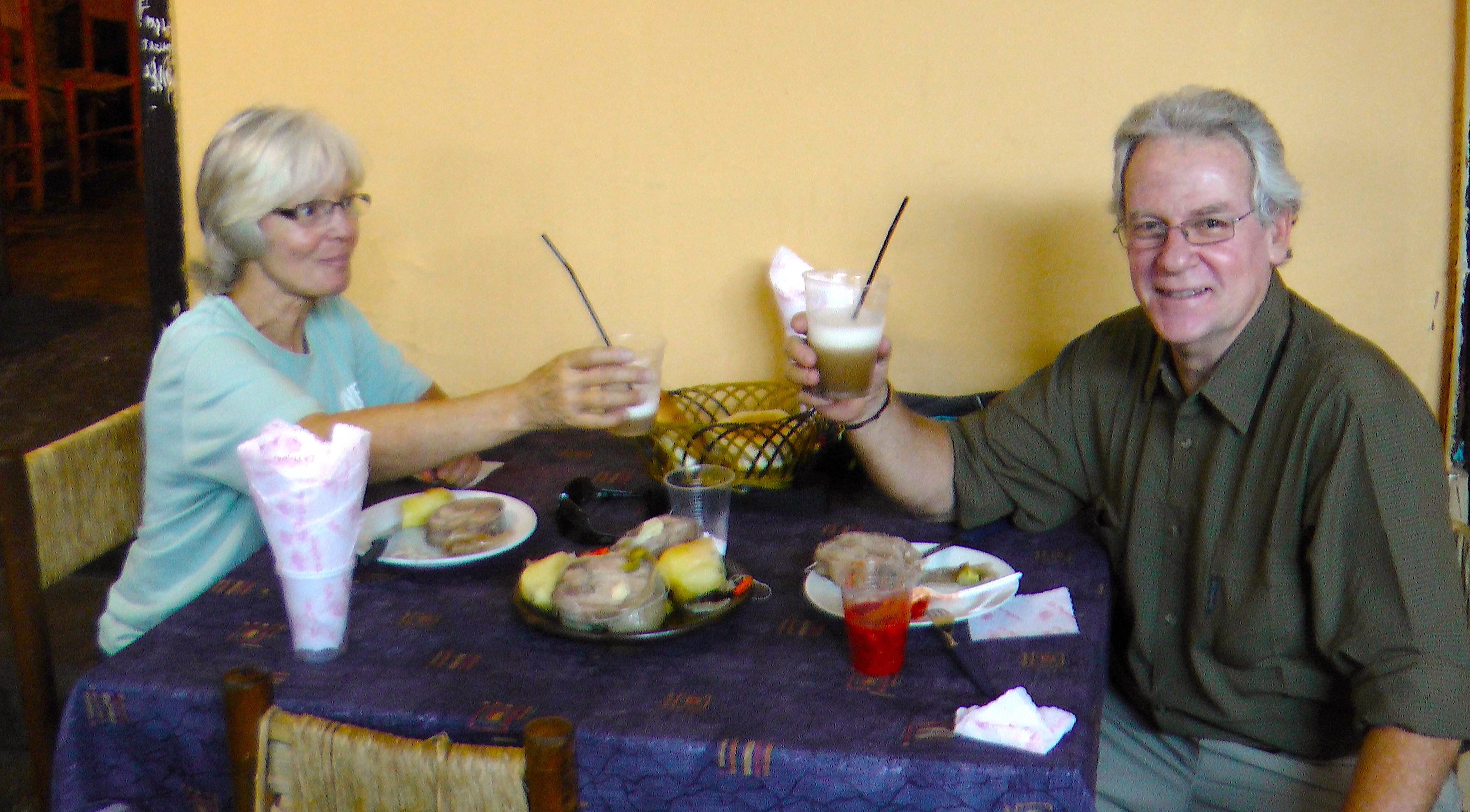
Adventurouspirits
Enlarge
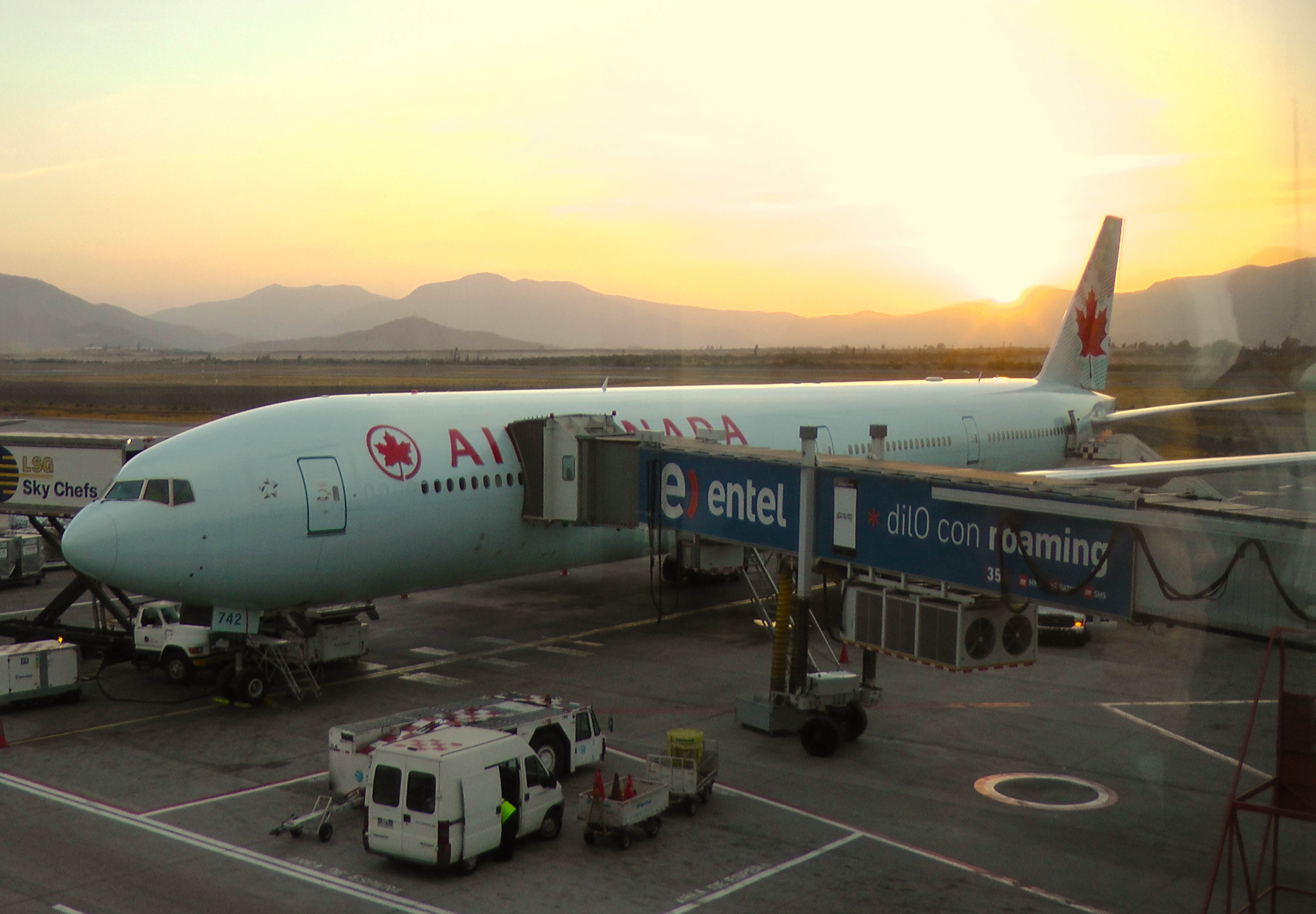
Adventurouspirits
Thank you America, thank you USA, Mexico, Central America and South America. We love you all.
Hasta luego
After loading the camper into a shipping container we have a few days to tour Santiago before boarding our flight to Canada, settling back in and retrieving our camper in Vancouver.

Simply wonderful…no other way to describe some of the scenes. Maybe incredible, eh!
Ahhh, the patagonian wind, sometimes called “the broom of God”. It is hard to imagine it, and no description can adequately describe it. You will be finding Patagonian dust in all your belongings for a VERY long time. My favorite story from Patagonia involves my son, Sean, who was 10 at the time. We were camping one night, on the shore of a small lake. The wind was strong, but not unbearable. Sean had to go pee and his father wisely advised him to not pee into the wind. A few minutes later Sean returned to the camper, soaking wet from shoulders to knees. His father asked him what had happened, why he had not heeded his wise father’s warning. Sean, a little more than miffed, replied, “the wind changed!!!”
Enjoy the wind folks!
What amazing scenery and features!! What fantastic memories!!! Take care!
Stunning pics!!!! Your trip report /pics are an inspiration.
Tom and Jan I can only echo others priase for your report and photography. So readable I just want to be there, but so thorough that I feel I have been there and do not need to travel!! That shot of the lenticular cloud at sunset – awesome.
With all this wind have you now or ever slept with the top down on the camper? Ever done it for a security issue or other than a weather issue?